ALBERTINA AND WALTER SISULU
Two great South Africans, Albertina (Nontsikelelo) and Walter Max (Ulyate) Sisulu are immortalised in a clay sculpture by Marina Walsh (2009) installed in a small square on historic Diagonal Street. The 2.7-tonne artwork of this couple who sit holding hands commemorates the enduring love they had for each other and the nation. Both prominent anti-apartheid activists, 'Ma Sisulu', as she was affectionately known, was admired for her compassion and work to improve the lives of children, women and the elderly, while Walter served as Secretary-General and Deputy President of the African National Congress. He was imprisoned for 25 years alongside his great friend Nelson Mandela on Robben Island. The sculpture site is across the street from where Walter once had his real estate office. Albertina died in 2011 while Walter passed away in 2003.Intersection of Diagonal, Ntemi Piliso and Albertina Sisulu Streets, City Centre.
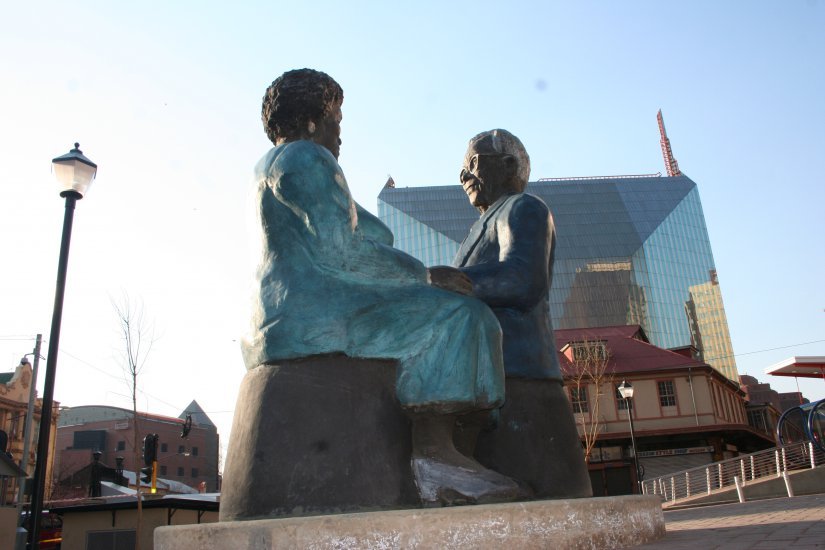
ANGEL OF THE NORTH
The five-metre tall concrete winged angel, installed in 2010, stands near Constitution Hill welcoming all to Hillbrow. With its outstretched arms, it has been compared to Rio de Janeiro’s Christ the Redeemer, albeit a miniature version. In his brief, artist Winston Luthuli wrote: "Its presence serves as a kind of sentinel, and is incongruous with what one might expect to find in this crime and grime-ridden part of Joburg... Angels are present in the folklore of many different cultures and generally represent a higher state of being."
Cnr Queens and Kotze Streets, Hillbrow, Braamfontein.
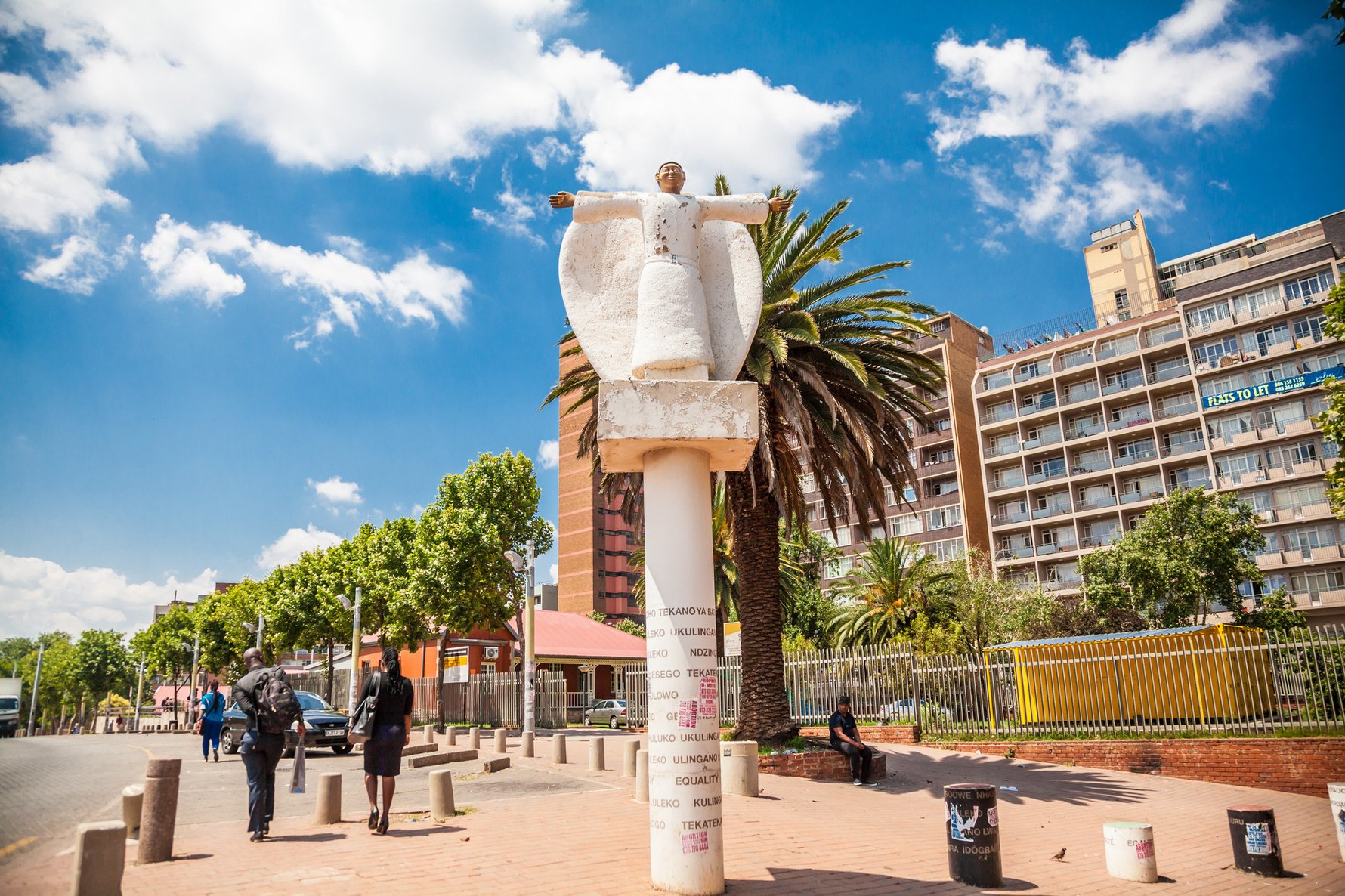
BRENDA FASSIE
Artist Angus Taylor’s life-size bronze sculpture of Brenda Fassie (2006) in the Market Theatre precinct was commissioned by the Sunday Times Heritage Project. Before social media and celebrity-obsessed magazines, Fassie was one of South Africa’s biggest home-grown music stars and the original “bad girl”. Born in 1964 into a deeply entrenched apartheid society, she defied all conventions to become a true pop idol, today remembered by her songs, among them Weekend Special and Too Late for Mama. She lived life to excess and her trajectory to stardom was as dramatic as her downfall. 'MaBrrr', as she was known, died at the age of 39, reportedly of a drug overdose. Time Magazine dubbed her the 'Madonna of the townships'.
56 Margaret Mcingana Street, Newtown, City Centre.
ELAND
Artist Clive van den Berg’s sculpture of a giant buck with its aloe planters (2007) greets visitors to Braamfontein at one of the gateways to the City Centre. Eland is "a large representation of an eland on a corner where it has long since disappeared," wrote Van den Berg. The sculpture brings to mind San ancestors and the natural environment that has long since been taken over by a growing city. He added that he hoped the Eland would prompt "reflection on our relationship to the past, and to the interconnectedness of environmental, cultural and spiritual destinies".Cnr Bertha and Ameshoff Streets, Braamfontein.
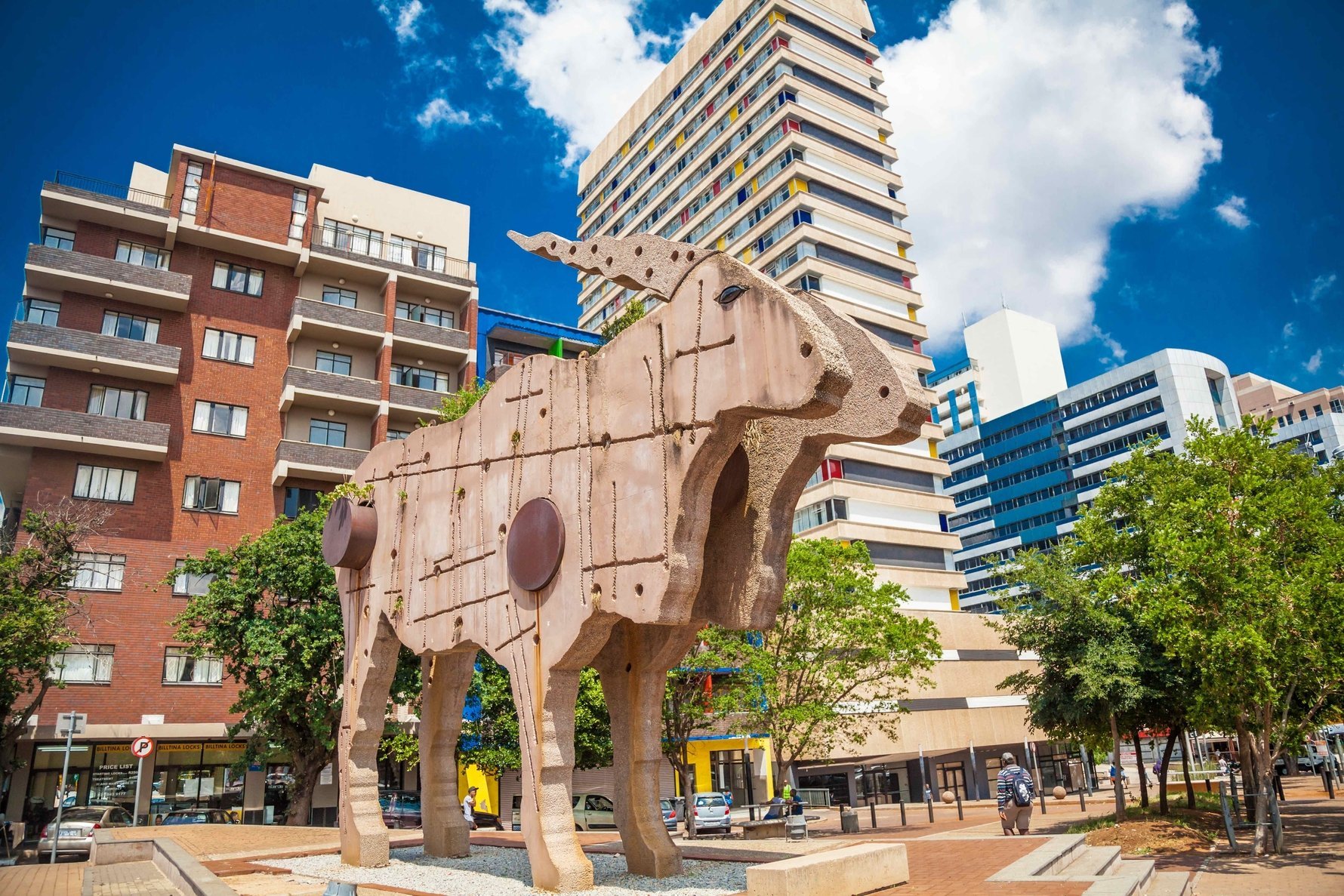
FIRE WALKER
Along nearby Diagonal Street women still walk with lit braziers atop their heads selling sheep’s head 'smileys' or mielies (corn cobs). Fire Walker by William Kentridge and Gerhard Marx (2009) is an 11-metre-high metal sculpture created by fractured pieces that split apart as you view it from different points. It pays homage to these women and the everyday activities of city dwellers. The sculpture's location just off Queen Elizabeth Bridge makes it difficult to stop and view it, and walking alone in the area is not advised. A slow drive past is recommended until the city implements improved security measures.
Cnr Simmonds and Sauer Street, City Centre.
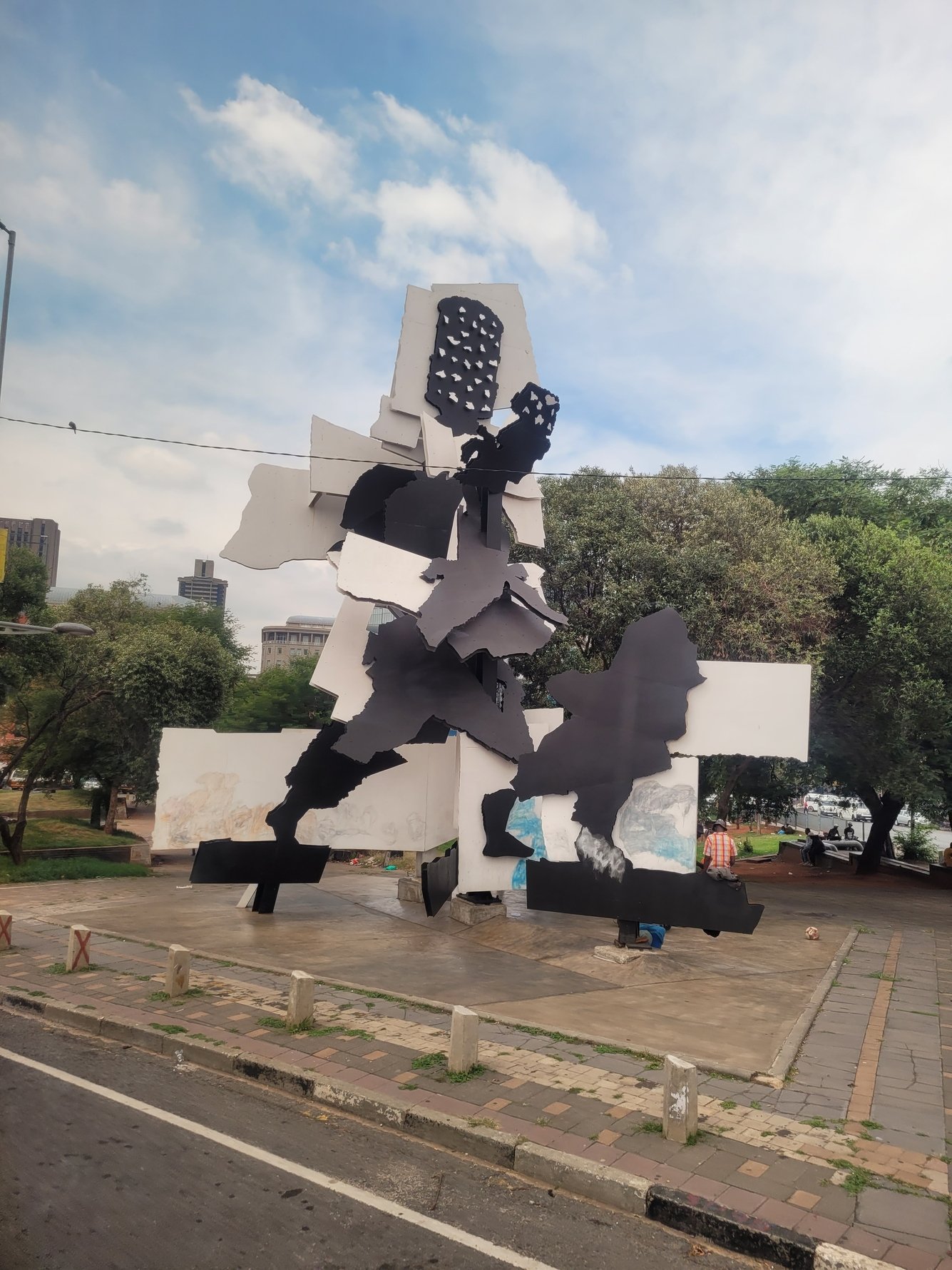
GOVERNOR'S HOUSE TREES
Americo Guambe’s exquisite sculptures (2010) were carved from dead trees found in the area. They stand behind Governor’s House, built around 1908 for the governor of the Old Fort. Tree I depicts a young girl looking towards Hillbrow. Beneath her are carvings representing the many diverse nationalities that have made Hillbrow home. Tree II is a sculpture of a boy pointing towards the city. He stands atop intricate carvings of the cityscape etched into the trunk.Governor's House, Queen's Road, Hillbrow.
MOHANDAS GANDHI
One of the City Centre's main transport terminuses, Gandhi Square is where most commuter Metro Bus services start and end. The square is named after Mohandas 'Mahatma' Gandhi who once worked here as a lawyer when the square was known as Government Square and was home to the city's law courts. Gandhi came to South Africa in 1893. Over time he became active in the politics of resistance, calling for Indian and Chinese people (classified as non-white) to burn their pass (identity) books. He was tried, convicted and sentenced for this. He left for India In 1914 having shaped and established his policy of passive resistance, 'Satyagraha'. His time as a lawyer in Johannesburg is remembered in a 2.5-metre statue on the square. Unveiled on Oct 2 (Gandhi's birthday) in 2003, Tinka Christopher’s bronze statue is of a young Mohandas Gandhi as a lawyer, a gown over his suit, and a book beneath his arm as he looks ahead.Gandhi Square, City Centre.
NEWTOWN HEADS
Hundreds of carved wooden heads mounted on concrete bollards line Mary Fitzgerald Square and several streets in Newtown. Known as the Newtown Heads, they were the first major art commission in an open public space in Joburg's City Centre as part of the regeneration of Newtown as a cultural precinct. Every one of the 560 original sculptures was hand-carved out of disused railway sleepers, drawing on different artistic traditions from across the African continent. Since their installation in 2001, the Newtown Heads have become one of the district's most iconic features. Many of the carvings were restored or replaced in 2018 as part of the Newtown Now! festival by artist Americo Guambe, who spearheaded the creation of the original Newtown Heads, with funding from the Joburg City government and the Johannesburg Development Agency.Mary Fitzgerald Square, 120 Lilian Ngoyi Street, Newtown.
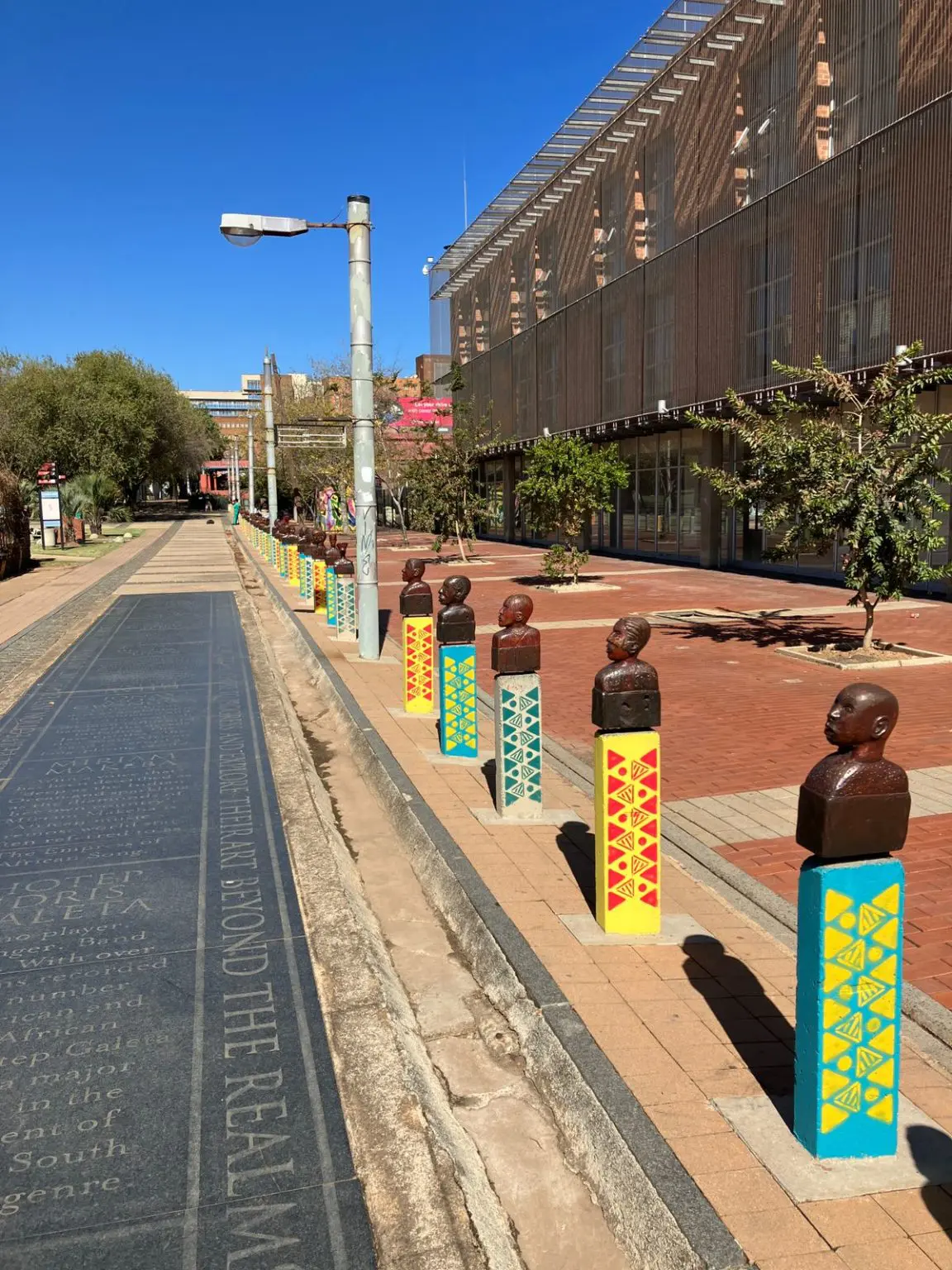
PAPER PIGEONS
The three grey, three-metre steel pigeons created by Gerhard and Maja Marx (2009) look as if they have been fashioned from origami. As Past Experiences' tour guide, Jo Buitendach says: "Most statues have pigeons that sit and poop on them. These pigeons were made for that." The sculptures have metal rods so that live birds can roost on them, encouraged by food left by the local community. In an interview published by the Johannesburg Development Agency, Gerhard Marx said: "Having the pigeons sitting on the sculpture [is] part of the choreography of the sculpture."Cnr Main Reef and Albertina Sisulu Roads, Ferreirasdorp, City Centre.
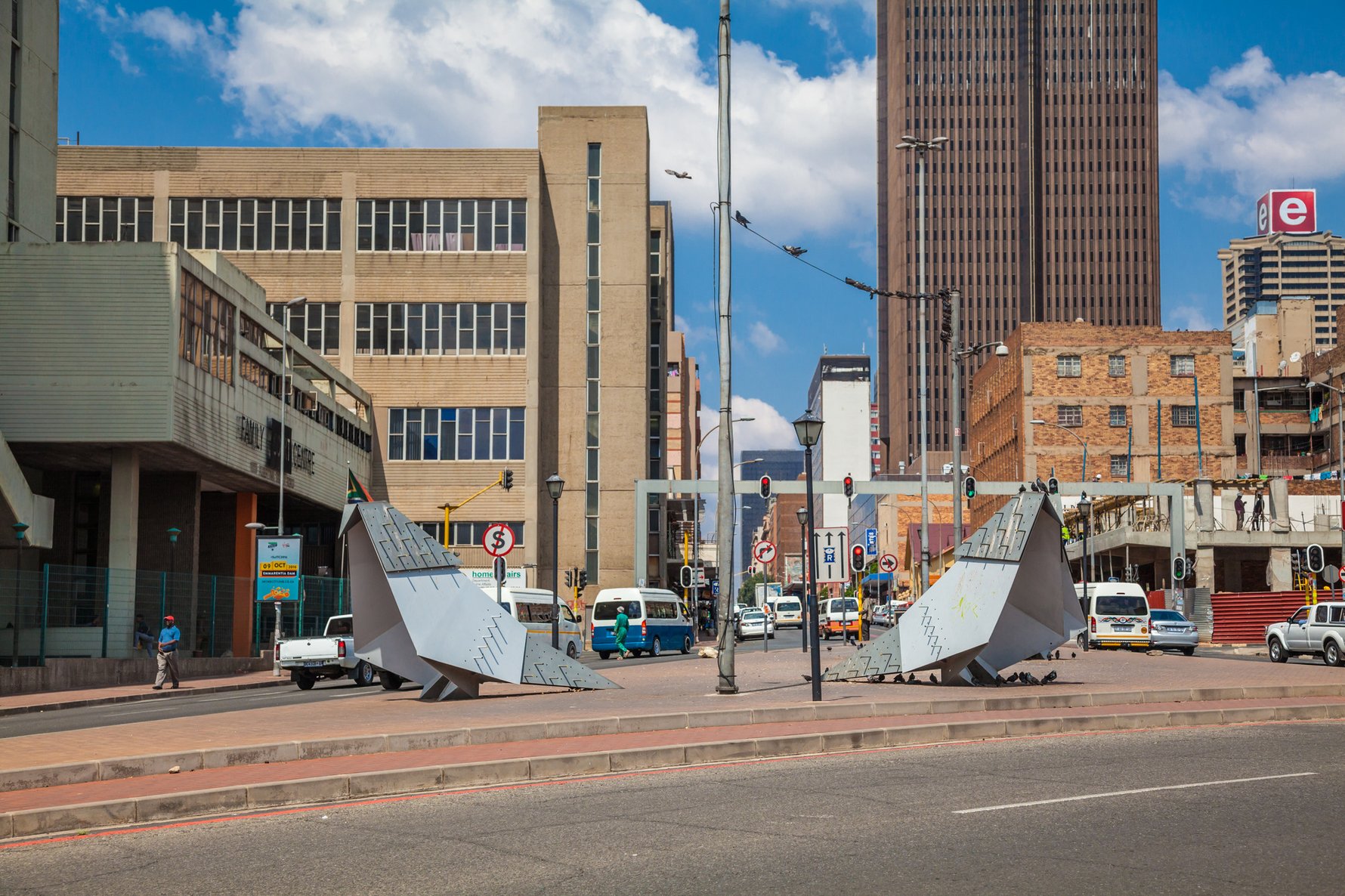
RMB THINK PRECINCT
In and around the piazza that surrounds Rand Merchant Bank's headquarters on Fredman Drive in Sandton Central is the Think Precinct, a small-scale, open-air sculpture garden that has been designed as a place where harried Sandton office workers can take a seat outside, admire some art, and think. Louis Olivier’s Differently Think is a concrete bench with two pensive, life-size bronze figures waiting on it. In June 2019 the RMB Think Precinct welcomed its largest and most impressive sculpture, Edoardo Villa's immense 1978 steelwork Confrontation. Other significant works in the Think Precinct include Angus Taylor's Entangled Head III, a monumental bronze and granite bust of a man balancing the African continent on his head, Guy du Toit's playful bronze hare which imitates the same pose as Rodin's famous Thinker, and Marieke Prinsloo-Rowe's bronze Africa's Fearless Girl.Merchant Place, Fredman Drive (Cnr Gwen Lane), Sandton Central.
SHADOW BOXING
In 2013 sculptor Marco Cianfanelli returned Nelson Mandela as a public figure to Johannesburg and specifically to the places he inhabited in the 1950s. At close to six metres, Shadow Boxing towers between Chancellor House – once Mandela and Tambo Attorneys, the first black law practice in Johannesburg – and the Johannesburg Magistrate’s Court. Mandela was an avid boxer, and the sculpture was inspired by a photograph of him (taken by Drum's Bob Gosani in 1952) sparring with Jerry Moloi on the rooftop of the South African Associated Newspapers Building in the City Centre. Mandela was to spend much time in court, both as an attorney and as the accused, and in the boxer’s stance, the sculpture conveys both the defensive power and the possibility of a powerful strike. His words are etched across the concrete plinth: "In the ring, rank, age, colour, and wealth are irrelevant."Cnr Fox and Gerard Sekoto Streets, Ferreirasdorp, City Centre.
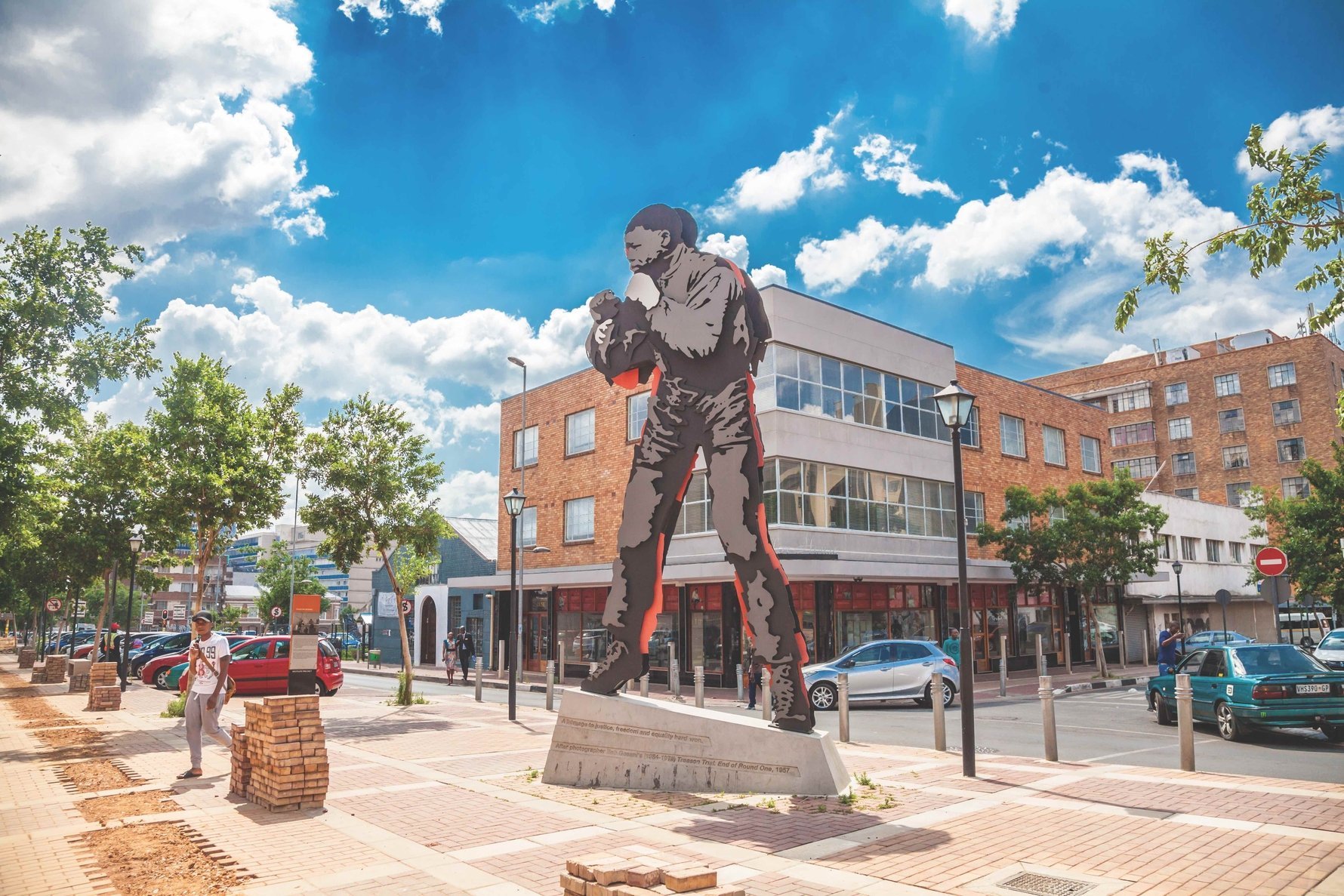
FURTHER AFIELD
UNIVERSITY OF PRETORIA'S SCULPTURE ROUTETake the Gautrain to Hatfield Station and explore the University of Pretoria's Museums Sculpture Route. The shorter route is wheelchair-friendly and about 30 minutes, while the extended route takes around an hour and a half. Access is free as long as you obtain a visitor pass onto campus from Mon – Fri between 08:00 – 15:00. The route map allows you to explore and experience the diverse collection of more than 40 sculptures at your own pace, 28 of which are located on the university's Hatfield campus. Look out for works by distinguished South African artists including Edoardo Villa, Izaac Seoka, Guy du Toit, Angus Taylor, Mary Steinbank, Anton Smit, Abraham Makhabula, and more.
University of Pretoria, Hatfield Campus, University Road, Pretoria.
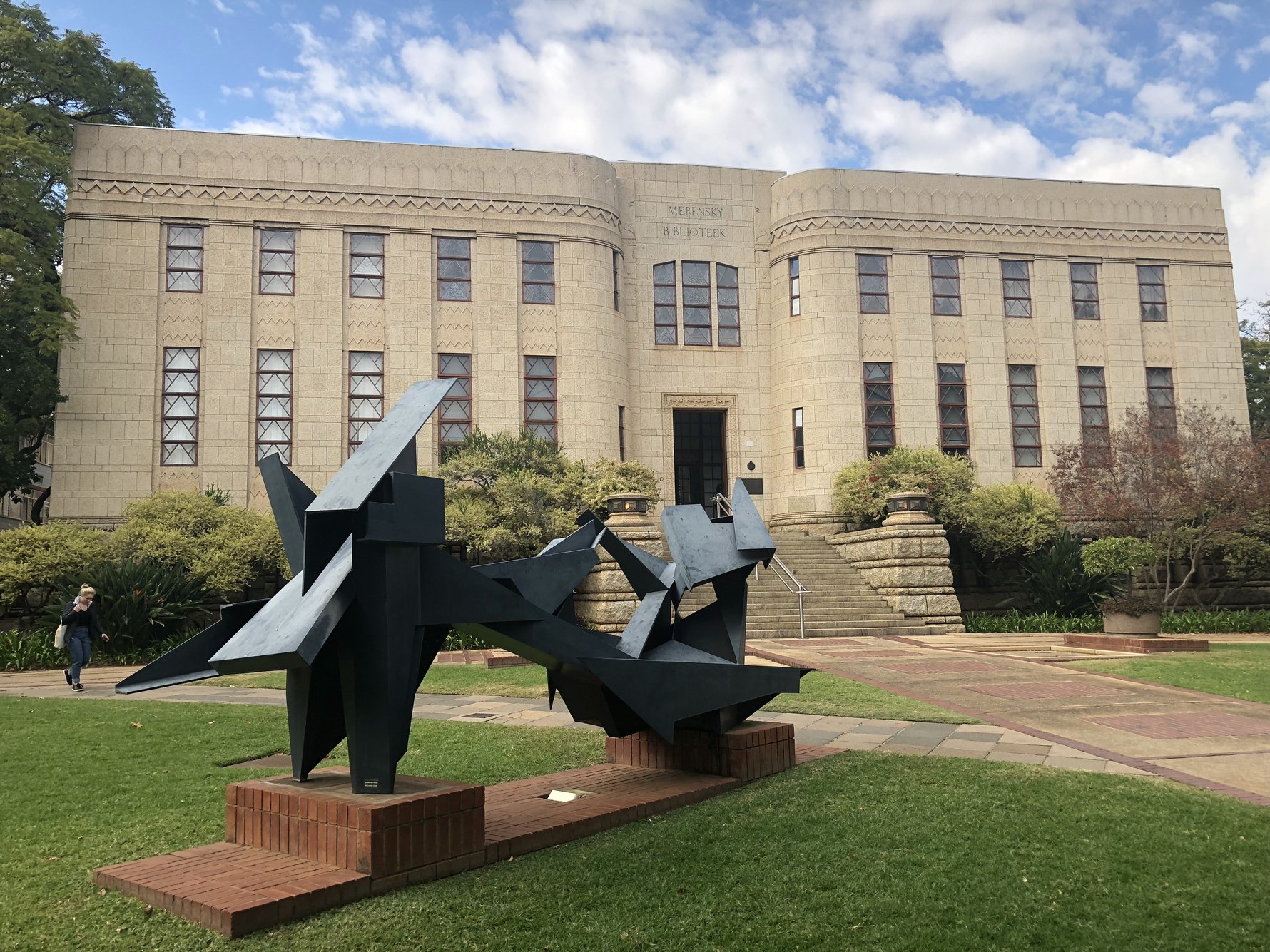


 (1)_m.jpg)
 (1)_m.jpg)
 (1) (1)_m.jpg)


Comments